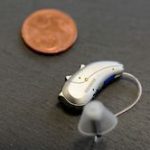
TENS therapy – Treat pain with electricity without risk
The recognized therapy TENS (Transcutaneous Electrical Nerve Stimulation) is used to combat various forms of pain. Pain therapists are increasingly using TENS devices, which transmit electrical impulses to the affected areas of the body via skin electrodes.
These impulses, which are emitted by the small devices (about the size of a smartphone), are usually experienced by patients as extremely pleasant and stimulating. How this works concretely and whether the benefit for the patients is achieved accordingly, shall be brought closer in the following.
The function and the procedure of the therapy with TENS devices
First, adhesive electrodes are applied to the affected areas of the body, which are connected to the device via cables. The position of the electrodes depends on the radiation and the location of the pain. The selection of devices and accessories is extremely extensive. It is recommended in any case to carry out an instruction in the handling of the devices.
Ideally, the product has different programs and possibilities to regulate the current strength (lower or higher frequencies) and to set the individual parameters for the treatment. Through this current therapy, nerves are stimulated and encouraged to inhibit or reduce the transmission of pain to the brain.
TENS therapy is an inexpensive and at the same time recognized method of pain relief, which does not require medication at all. Even though scientific studies are inconclusive about the effectiveness of the device, numerous studies have shown that it has a significant benefit for those affected. At the same time, this procedure is associated with a low effort, with almost no risks.
Some legal ones take over the costs by the way. However, the statutory or private health insurance should be consulted.
Numerous applications of TENS devices for pain syndromes
Even if, as with almost all medical treatment methods, no miracles are to be expected, a therapy with TENS devices promises considerable relief. The areas of application are manifold, for example
- Headaches and migraines,
- Nerve pain in diabetes or shingles,
- phantom pain (e.g. after an amputation),
- Sports injuries and joint pain,
- Treatment after surgical intervention (relieve pain, reduce intake of painkillers).
Patients suffering from mental illness or epilepsy, pregnant women or people with implanted defibrillators and pacemakers, however, should refrain from TENS treatment.
Period and intensity of treatment with TENS units
A treatment with the TENS devices usually lasts between 20 and 60 minutes. The session can be repeated several times a day (no damage to be expected) and depends on how the procedure works with the affected person and over what period of time the positive effect actually lasts.





